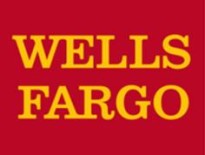Consumer spending in 2016 increased at a slower pace year-over-year, despite a faster increasing pre-tax income per consumer unit, the U.S. Department of Labor Statistics reported Tuesday.
A consumer unit is defined as a family, single person living alone or sharing a household with others who are financially independent or two or more persons living together who share expenses.
According to the BLS report, consumer spending rose 2.4 percent in 2016 to $57,311, a 2.7 percent increase from 2015. However, in 2015, consumer spending rose 4.6 percent from 2014.
Pre-tax income in 2016 was $74,664, a 7.2 percent increase from 2015. Pre-tax income in 2015 only rose 4.1 percent from 2014, according to the report.
The consumer price index, a measure of the change in the cost of consumer goods and services, rose 1.3 percent between 2015 and 2016.
Consumers in 2016 spent more on personal insurance and pensions, which rose 7.6 percent to $6,831, primarily driven by the 8.2 percent increase in pensions and Social Security expenditures. Health care expenditures rose 6.2 percent. Housing expenditures increased 2.6 percent.
The change for housing, according to the report, was driven by rented dwellings, up 6.1 percent. Owned dwellings, which includes mortgage interest, property taxes and maintenance, repairs and insurance increased 1.4 percent.
Expenditures on the discretionary categories of food away from home and entertainment continued increasing in 2016, up 4.9 percent and 2.5 percent respectively, after increasing 7.9 percent and 4.2 percent in 2015.
Transportation expenditures fell 4.8 percent primarily driven by the 9.1 percent decline in vehicle purchases expenditures and the 8.7 percent decline in gasoline and motor oil expenditures. Gasoline and motor oil expenditures have declined each year since 2012.






